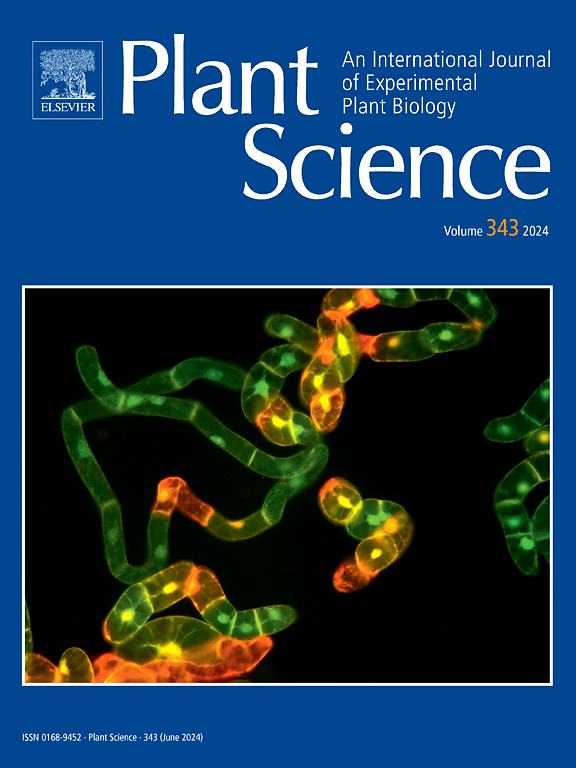Identification and functional analysis of BAG gene family contributing to verticillium wilt resistance in upland cotton
IF 4.2
2区 生物学
Q2 BIOCHEMISTRY & MOLECULAR BIOLOGY
引用次数: 0
Abstract
Cotton fiber is a primary textile material and a significant economic resource globally. Verticillium dahliae, a destructive soil-borne fungal pathogen, severely impacts cotton yields. The Bcl-2–associated athanogene (BAG) protein family, functioning as molecular chaperone co-chaperones, plays a crucial role in plant stress responses. In this study, 24, 12, and 11 BAG genes were identified in upland cotton (Gossypium hirsutum), Asiatic cotton (G. arboreum), and Levant cotton (G. raimondii), respectively. The BAG gene family demonstrates relative conservation throughout cotton evolution. Conserved domain analysis revealed that BAG proteins from these species universally contain the conserved BAG domain, with some members also possessing the UBL domain and CaM-binding motifs. Virus-induced gene silencing (VIGS) was utilized to investigate gene function in upland cotton. Compared to the negative control, following V. dahliae infection, the silencing of GhBAG7.1 and GhBAG6.2 makes the plants more susceptible to infection, showing symptoms earlier. Quantitative Real-Time Polymerase Chain Reaction (RT-qPCR) analysis indicated that V. dahliae infection upregulated the expression of GhBAG7.1, GhBAG6.2, and GhBAG4.1 in upland cotton, while GhBAG4.4 expression was downregulated. Furthermore, following the silencing of the GhBAG6.2 gene, V. dahliae infection led to an initial upregulation of disease resistance-related genes (ERF1, PR5, PDF1.2, NPR1, PR1, OPR3), which was followed by a subsequent decrease in their expression. Transcriptomic analysis revealed a transient upregulation of defense-related pathways, including phenylpropanoid biosynthesis, MAPK signaling pathway, and plant-pathogen interactions, at 48- and 96-hours post-inoculation with V. dahliae. The findings provide a foundation for future research on stress-tolerant genes in cotton and offer new genetic resources for breeding disease-resistant cotton varieties.
陆地棉抗黄萎病BAG基因家族的鉴定与功能分析
棉纤维是一种重要的纺织原料,是全球重要的经济资源。大丽花黄萎病是一种破坏性的土传真菌,严重影响棉花产量。bcl -2相关无thanogene (BAG)蛋白家族作为分子伴侣和共伴侣在植物逆境响应中起着重要作用。本研究在陆地棉(Gossypium hirsutum)、亚洲棉(G. arboreum)和黎凡特棉(G. raimondii)中分别鉴定出24、12和11个BAG基因。BAG基因家族在棉花进化过程中表现出相对的保守性。保守结构域分析表明,这些物种的BAG蛋白普遍含有保守的BAG结构域,部分成员还具有UBL结构域和cam结合基元。利用病毒诱导基因沉默(VIGS)技术研究了陆地棉的基因功能。与阴性对照相比,在大丽花感染后,GhBAG7.1和GhBAG6.2基因的沉默使植株更容易感染,出现症状的时间更早。定量实时聚合酶链式反应(RT-qPCR)分析显示,陆地棉感染V. dahliae后GhBAG7.1、GhBAG6.2和GhBAG4.1表达上调,GhBAG4.4表达下调。此外,在GhBAG6.2基因沉默后,V. dahliae感染导致抗病相关基因(ERF1, PR5, PDF1.2, NPR1, PR1, OPR3)的初始上调,随后它们的表达下降。转录组学分析显示,接种大丽花后48和96小时,防御相关途径(包括苯丙素生物合成、MAPK信号通路和植物与病原体的相互作用)出现了短暂的上调。研究结果为今后棉花抗逆性基因的研究奠定了基础,并为棉花抗病品种的选育提供了新的遗传资源。
本文章由计算机程序翻译,如有差异,请以英文原文为准。
求助全文
约1分钟内获得全文
求助全文
来源期刊

Plant Science
生物-生化与分子生物学
CiteScore
9.10
自引率
1.90%
发文量
322
审稿时长
33 days
期刊介绍:
Plant Science will publish in the minimum of time, research manuscripts as well as commissioned reviews and commentaries recommended by its referees in all areas of experimental plant biology with emphasis in the broad areas of genomics, proteomics, biochemistry (including enzymology), physiology, cell biology, development, genetics, functional plant breeding, systems biology and the interaction of plants with the environment.
Manuscripts for full consideration should be written concisely and essentially as a final report. The main criterion for publication is that the manuscript must contain original and significant insights that lead to a better understanding of fundamental plant biology. Papers centering on plant cell culture should be of interest to a wide audience and methods employed result in a substantial improvement over existing established techniques and approaches. Methods papers are welcome only when the technique(s) described is novel or provides a major advancement of established protocols.
 求助内容:
求助内容: 应助结果提醒方式:
应助结果提醒方式:


